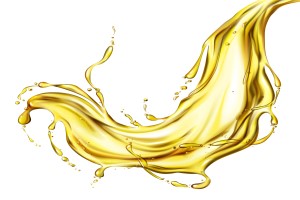Lubrication
Lubrication Fundamentals: Tribology

Lubrication is the science of reducing friction by applying a material between the surfaces of two bodies that are in relative motion.
A lubricant can be solid, liquid or gaseous and lubrication is its main function. The usual purpose of lubrication is to lubricate surfaces to minimize direct metal-to-metal contact and therefore reduce friction and wear. The term lubricant is also loosely applied to many other fluids that do not specifically perform this function. Examples include energy and heat transmission fluids, hydraulic fluids, dielectric fluids, process oils, among others. A lubricant performs many different functions, which help to protect and extend the life of the equipment.
A lubricant performs many different functions, which help to protect and extend the life of the equipment.
Isso inclui o seguinte:
- Lubrication: reduces friction and wear - this is the basic function of the lubricant. The lubricant helps to reduce friction and wear by introducing a lubricating film into the space between moving parts, such as gears and bearings. The presence of a lubricating film minimizes metal-to-metal contact and reduces the force required to move one surface against the other, thereby reducing wear and saving energy.
- Heat transfer - the lubricant acts as a heat sink removing heat from the critical moving parts of the equipment, thus reducing the possibility of deformation and wear of the machine components. The heat results from the friction of the metal surfaces, as in the gears, or it is conducted and radiated heat, which is due to the proximity of the parts to a combustion source, such as the combustion chamber in an engine.
- Cleaning and suspension - the lubricant facilitates the operation of the equipment by removing and suspending potentially harmful products, such as carbon, sludge and varnish, and other materials, such as dirt and wear residues. This lubricating function is important in operations that involve high operating temperatures, as in the case of an internal combustion engine or transmission.
- Protection - the lubricant prevents damage to the metal by protecting it from oxidation, corrosion and wear products. It achieves this by forming a physical film on metal surfaces that is impermeable to oxygen, water and acids, or by forming physical and chemical films by additives, such as rust and corrosion inhibitors, extreme pressure additives and anti-wear agents, which are present in the lubricant.
- Energy transfer - the lubricant is used as a means of energy transfer in some applications, for example, in hydraulic systems. The lubricant performs this function in addition to its normal lubrication function. Examples of equipment that uses hydraulic technology include transmissions, circulation systems, elevators used in automotive service stations, log separators, forklifts, dump trucks and underground continuous mining equipment, such as drills, loaders and miners.
- Shock absorption - the lubricant is used as a means of shock absorption by transforming mechanical energy into fluid energy (as in automobile shock absorbers) and dampening the shock of gear teeth
- Sealing - preventing the release of lubricants and the entry of foreign particles (function of greases), and preventing the entry of other fluids or gases (function of oils in the cylinders of engines or compressors).
In addition to the functions assigned above, each lubricant may have additional assignments to meet specific characteristics of the equipment and operation in which it is being used.
Tribology
To continue talking about lubrication, we have to understand a little about tribology.
Tribology is the science of wear, friction and lubrication, addressing how interacting surfaces or triboelements behave in relative motion within natural and artificial systems.
Tribology is not an isolated science, but a complex and multidisciplinary journey, where advances are made by collaborative efforts by researchers in areas such as mechanical engineering, manufacturing, materials science, chemistry and chemical engineering, physics, mathematics, science and engineering biomedical, computer science and more.
The term was first introduced in a British study in 1966 (The Jost Report), which pointed to the magnitude of the annual monetary loss in the United Kingdom attributed to the consequences of friction, wear and corrosion. More precisely, tribology is the science and technology of interacting surfaces in relative motion, regardless of whether they involve mechanics or not.
The tribological system consists of four elements: body, against body, the interface between the two bodies and the environment. In bearings, the lubricant is located in this gap. In plain bearings, the material pair is the shaft and bushings; in combustion engines are piston rings and the cylinder wall and in metallurgy, the tool and the workpiece.
The variables are the type of movement, the forces involved, temperature, speed and duration of stress. Tribometric parameters - such as friction, wear and temperature data - can be obtained in the stress area. Tribological stress is the result of various criteria of surface and contact geometry, surface load or lubricant thickness.
Let your comment here!!!
All fields must be filled
>2024-07-30 06:01:44
ernautdatheand6c0+2606k4srs2vh@gmail.com
ernautdatheand6c0+2606k4srs2vh@gmail.com
2024-07-09 17:27:06
ernautdatheand6c0+2606k2u956qn@gmail.com
ernautdatheand6c0+2606k2u956qn@gmail.com
2024-06-28 00:19:28
medranostarckuzz8n0+2606k4ms61bb@gmail.com
medranostarckuzz8n0+2606k4ms61bb@gmail.com
2024-06-17 07:12:06
medranostarckuzz8n0+2606k3m34n90@gmail.com
medranostarckuzz8n0+2606k3m34n90@gmail.com
2024-06-05 00:47:31
flagstoneveneydel2q9+osp07l56k7@gmail.com
flagstoneveneydel2q9+osp07l56k7@gmail.com
2024-05-28 22:56:09
sorgelakhanakp9z5+osp2f50rs8@gmail.com
sorgelakhanakp9z5+osp2f50rs8@gmail.com
2024-05-21 21:18:39
schermerdusenberycmp5p8+osp1q9ehvu@gmail.com
schermerdusenberycmp5p8+osp1q9ehvu@gmail.com
2022-01-25 13:01:21
ailton gomes
ailtongomes04913@gmail.com